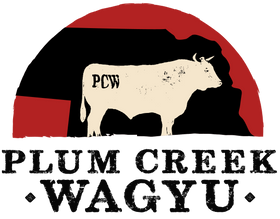Wagyu beef is renowned for its exceptional quality and flavor, but there’s more to this delicacy than just its culinary appeal. As consumers become increasingly conscious of their environmental impact, the sustainability of food sources has come under scrutiny. Surprisingly, Japanese cattle farming embodies several eco-friendly practices that contribute to sustainable agriculture, particularly for Wagyu. Let’s explore why Wagyu can be considered an environmentally responsible choice.
1. Traditional Farming Practices
Japanese farmers have cultivated Wagyu cattle using traditional methods for centuries. This includes practices that prioritize animal welfare and environmental balance. Cattle are often raised in small herds, allowing for individualized care. This approach not only ensures high-quality meat but also minimizes stress on the animals, leading to healthier livestock and a more sustainable farming process.
2. Grass-Fed and Natural Diet
Wagyu cattle are primarily grass-fed, especially during the early stages of their lives. This diet not only promotes the rich marbling that Wagyu is famous for but also reduces the carbon footprint associated with feed production. Grasslands sequester carbon, helping to mitigate climate change, and using local grazing practices reduces transportation emissions.
3. Sustainable Land Management
Japanese cattle farmers often practice rotational grazing, a method that allows pastures to rest and regenerate. This sustainable land management technique improves soil health and biodiversity. Healthy pastures support a variety of plant species, which in turn supports local ecosystems. By promoting soil fertility and reducing erosion, these practices enhance the land's sustainability for future generations.
4. Low Environmental Impact
Wagyu farming in Japan typically involves fewer cattle per hectare compared to industrial farming methods. This lower stocking density helps reduce overgrazing and minimizes the environmental impact of waste. Furthermore, the focus on quality rather than quantity allows farmers to produce less meat while maintaining higher standards, resulting in a more efficient use of resources.
5. Water Conservation
Sustainable cattle farming also emphasizes water conservation. Wagyu farmers often utilize rainwater harvesting and other methods to minimize water usage. By implementing efficient irrigation systems and prioritizing the health of their pastures, these farmers can maintain productivity while reducing water waste, which is crucial in a world facing increasing water scarcity.
6. Emphasis on Biodiversity
Wagyu farming practices contribute to biodiversity preservation. By raising cattle in a way that supports local ecosystems, farmers help maintain the delicate balance of flora and fauna in their regions. This biodiversity is essential for ecosystem resilience and overall environmental health, ensuring that natural habitats remain intact.
7. Support for Local Economies
Wagyu farming is often a family-run business, deeply rooted in local communities. By supporting these farms, consumers contribute to the preservation of traditional practices and local economies. Sustainable farming methods help create jobs and promote a sense of community, reinforcing the connection between food and its origins.
The Sustainable Choice
As we navigate the complexities of sustainable eating, Wagyu beef stands out as a surprisingly eco-friendly option. With its roots in traditional farming practices, a focus on animal welfare, and sustainable land management, Japanese cattle farming presents a model for responsible agriculture.
Choosing Wagyu not only offers a luxurious dining experience but also supports environmentally conscious practices. By understanding the sustainability of Wagyu beef, we can make informed choices that benefit both our palates and the planet. Next time you savor a piece of Wagyu, remember that it’s more than just a meal—it’s a step toward a more sustainable future.
What are your thoughts on sustainable farming? Share your insights in the comments below!
Related Posts
Beyond the Steak: Creative Wagyu Recipes for Every Occasion
Take your Wagyu beyond the steak! From juicy burgers to slow-cooked short ribs and mouthwatering tacos, explore creative Wagyu recipes perfect for any occasion.
Mastering the Perfect Wagyu Steak: Cooking Techniques for Every Cut
Master the art of cooking Wagyu steak with expert techniques for grilling, pan-searing, and sous vide. Discover the best methods to bring out the rich marbling and unmatched flavor of every cut.
Pairing Wagyu with Whiskey, Wine, and Cocktails: The Best Drinks to Complement Wagyu Beef
Discover the best drink pairings for Wagyu beef! From rich whiskeys and bold wines to complex cocktails, find out how to complement the rich flavors of Wagyu with the perfect beverage!
Wagyu Myths Debunked: Separating Fact from Fiction
Wagyu beef is often surrounded by myths, from misconceptions about its price to confusion about its fat content. In this post, we debunk the most common myths about Wagyu beef, providing the facts that every meat lover should know.
Wagyu and the Farm-to-Table Movement: How Local Sourcing and Sustainable Ranching Impact Wagyu Quality
Explore how the farm-to-table movement is enhancing the quality of Wagyu beef through local sourcing and sustainable ranching practices. Learn how these practices contribute to better flavor, ethical production, and a positive environmental impact.








